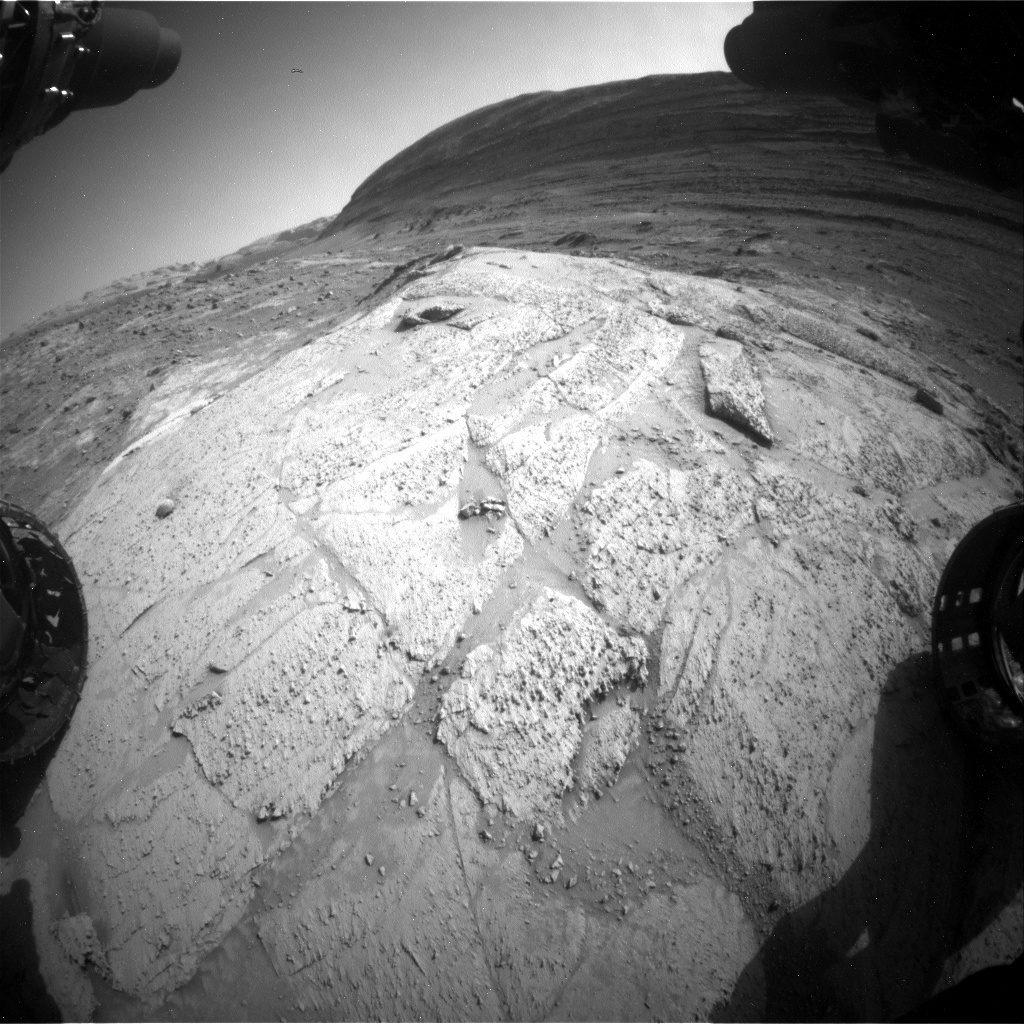Earth planning date: Wednesday, July 17, 2024
We started our day at an outcrop called “Fairview Dome,” a light-colored rock so big that it can easily be seen from orbit! We have had our eye on Fairview Dome since Curiosity descended into the Gediz Vallis channel. As a geologist who has spent a lot of time in the field, I imagined this as a perfect place to drop my backpack, enjoy my lunch, and soak in the stunning panoramic views from this vantage point mid-channel.
The science team opted to stay for two full days of contact science at Fairview Dome and assembled a plan consisting of numerous science observations. In the workspace directly in front of the rover’s wheels, we analyzed Fairview Dome using the dust removal tool, APXS, and MAHLI instruments at a target called “Amphitheater Dome.” The ChemCam team selected two LIBS targets on the Fairview Dome outcrop – “Columbia Finger” and “Agnew Meadows” – to analyze the chemistry. Mastcam planned four stereo mosaics on sol 4248 to image the rover’s surroundings, including the floor of upper Gediz Vallis, the floor of the upper Gediz Vallis ridge, the upper Gediz Vallis ridge channel, and a rock near the rover named “Tresidder Peak.” On the following sol, Mastcam assembled what will surely be a breathtaking, postcard-worthy, 360-degree mosaic of our current location.
Rounding out Curiosity’s to-do list for this two-sol plan, ChemCam took two long-distance RMI images to document the stratigraphy of the rocks looking up Gediz Vallis toward the south. Science team members in the environmental theme group planned observations including a suprahorizon movie to look at clouds, a dust devil movie, and a mastcam tau survey to measure the amount of dust in the Martian atmosphere.
Today, I served as the science team member responsible for compiling and organizing the details for each activity from the geology and mineralogy theme groups. Despite the intensity of the planning session, the spectacular views at Fairview Dome made me pause to appreciate where we are and how far Curiosity has come. And with so much striking geology still in front of us, it is indeed a very exciting time to be exploring on Mars!
Written by Sharon Wilson Purdy, Planetary Geologist at the Smithsonian National Air and Space Museum


































